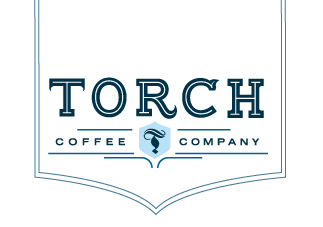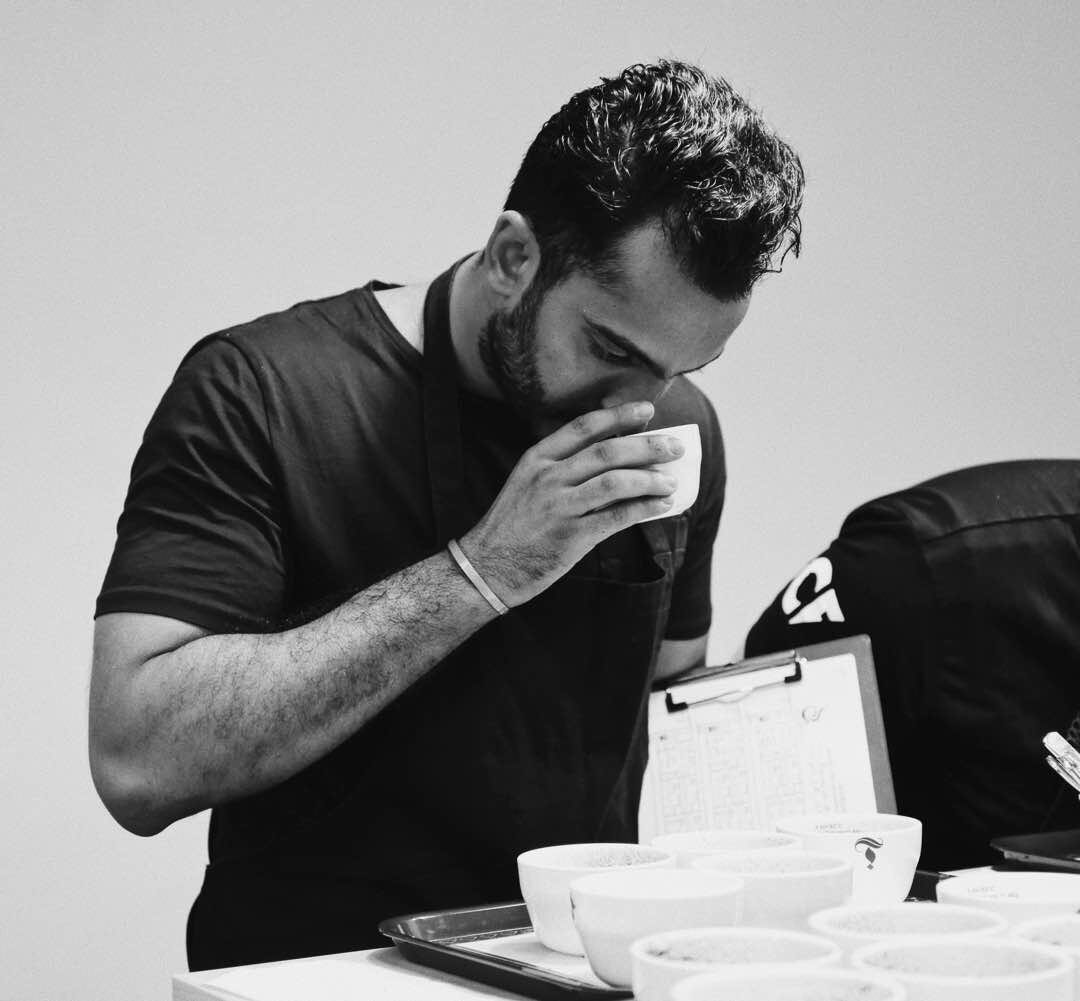Last month, Torch had one Q class, there were few students that are not from coffee industry, but they passed the class and even had a better result than some of the coffee professionals.
This article will help you understand better about Q grader test:
GENERAL KNOWLEDGE EXAM
Test: 100 Multiple Choice Questions
Time: 60 min
Passing score: 75%
The general knowledge exam is a 100 question test about all things coffee. Although most of the information will be reviewed in class, some of the items will not be reviewed. Students should be prepared by reviewing SCAA resources below.
Coffee farming, harvesting, processing
Coffee cupping and grading
Coffee roasting and brewing
CUPPING SKILLS
4 Tests
Time: 60 minutes each
Passing Score: 80% (86 points)
The test will contain four cupping flights of 6 coffee samples:
Central American Coffees
Asia/Pacific & Indonesian Coffees
African Coffees
Natural Processed Coffees
These will not be given in any particular order. Also, if the Q Exam is given in a country of origin, one of the flights may be substituted for the domestic coffee.
The cupper will be required to cup and evaluate the samples using the SCAA Cupping Protocols and Cupping form. Those whose form falls too close to the statistical middle for each characteristic will be asked to retake the exam, as will those who fall too far out of calibration.
The cupping flights will vary in quality and scores, therefore you must calibrate with your class within the acceptable range for that particular flight. Imagine that your class is like a swarm of bees. If your score is in the middle of the swarm of bees and you are consistently within the swarm of bees, then you pass. If you are too far outside of the swarm, you will not pass.
TIPS
Study the SCAA Cupping Protocols
Practice cupping using the SCAA Cupping form which can be found on the SCAA Store under “downloadable”
Create your own flights of the following origins and practice the protocols using the cupping form.
Avoid grading the coffee’s characteristics similarly as this may indicate that
the cupper is unsure of their performance.
Practice blind tasting from different origins and processing methods to test your palate
and become familiar with coffee origins.
SENSORY SKILLS
The sensory skills exam will test the participants ability to sense sour, sweet, and salty at different intensity levels and combinations
Taster will be tasting 3 odorless liquids: sour, sweet, and salty of different intensity levels (low, medium and high)
Part 1 – Reference:
Instructor led, Passing Score 100%.
Taster will taste 9 liquids, 3 of each modality (sour, sweet, salty),
and 3 intensities (low, medium, high). Discussion will follow.
Part 2 – Blind: 20 Minutes, Passing Score 80% (79 Points).
Taster must blindly identify all liquids, their modality and intensity.
Part 3 – Mixtures: 40 Minutes, Passing Score 70% (67 Points).
Taster will receive 8 liquid mixtures, 4 of which contain 2 solutions, and 4 of which contain 3 solutions. Taster must identify the modality and intensity of all of the contents.
TIPS
Although part 1 is for calibration and the answers are given from the discussion, the correct answers must be written on your score sheet to receive credit.
Part 2 has no duplicate answers.
Practice this exam at home by creating you own solutions of sugar, salt, and citric acid.
Stay hydrated before the test, avoid drinking alcohol the night before, be well rested and make sure you aren’t hungry when taking the exam. All of these things will increase your focus.
Trust your instincts! Those who take longer tend to do worse on this portion.
OLFACTORY SKILLS
Time: 4 Tests, 30 Minutes each
Passing Score: 75% (9/12 correct)
Resources:
Lenoir Le Nuz du Cafe scent kit
SCAA Art of Aroma Poster set
The Olfactory skills test will test the participants ability to smell, match, and identify scents from the Lenoir Le Nuz du Cafe scent kit.
The goal is for the participant to match scents grouped in 4 categories:
Enzymatic
Sugar Browning
Dry Distillation
Aromatic Taints
Part I
Participant must match 6 out of the 9 blind pairs given for each category.
Part II
Participant must identify 3 given vials for each category.
TIPS
Although the kits are expensive ($300), it is better to practice with 2 kits rather than 1 so you can practice matching pairs.
Focus on recalling the scents rather then memorising them
For part 1, DO NOT fill in the blanks like you did in GKE or they will count against you if wrong, you only need to identify 6 of the 9.
Do not wear perfume, use scented soap, eat fragrant foods, or smoke prior to the exam.
If you identify a scent issue with a fellow classmate, privately alert your instructor as it can taint the entire exam for the group.
TRIANGULATION SKILLS
Time: 4 Tests, 45 Minutes each
Passing Score: 83% (5/6 triads correct)
The Triangulation skills test will test the participants ability to identify an odd cup from a set of 3 cupping bowls.
Participants will cup six sets of three coffees. Two out of the three for each set are the same coffee and one is different.
Participants must identify the odd cup for 5/6 of the sets. Cupping will take place in a dark or red room to avoid visual cues of the different coffee.
TIPS
Practice your triangulations in the dark! This will help you avoid using visual cues.
Choose four very similar coffees to practice your triangulation so that is isn’t too easy!
Try using coffees from the same origin or even different lots from the same estate!
Focus on ALL sensory characteristics to identify differences.
Try to identify as much as you can on dry fragrance alone, then verify with aroma and taste.
ORGANIC ACIDS
Time: 40 Minutes
Passing Score: 75 Points
The instructor will give a brief lecture about each acid.
Students will match 2 of 4 weak brewed cups of coffee containing those acids and then identify the acids used. There are 8 sets.
Where to find these acids:
Acetic acid is simple vinegar.
Citric acid is available in most vitamin shops.
Food grade malic acid, lactic acid, phosphoric acid are in pharmaceutical supply stores.
Quinic acid, is sometimes found in pharmacies as an antimalarial drugs.
TIPS
Only 4 of the 6 acids will be used in the exam.
To practice, brew coffee at full strength then dilute the coffee 50%.
Distribute into 4 cups and taint 2 of the four with a weak concentration of one of the acids. Create different sets using different acids and attempt to match the pairs and identify the acids blindly.
Move quickly and trust your instincts, take too long and you will fatigue your palate.
GREEN COFFEE GRADING SKILLS
Time: 60 Minutes
Passing Score: 2/3 Samples Graded Correctly
The green coffee grading exam is designed to test the participants ability to correctly identify defects in a green sample based on the SCAA Green Arabica Defect Handbook.
This exam is open book and you should use the SCAA Green Arabica Defect Handbook or any other accompanying material.
Participants will receive three 350g samples of green coffee. Each has been sorted then tainted with a certain number and type of defects. Participants must identify the defects and label the coffee as specialty, or commodity based off the SCAA standards.
TIPS
Do not over-analyze the samples and find defects where there are
Make sure you know what the primary and secondary defects are and understand the differences between them.
To prepare, collect and grade samples of washed green coffee from different origins.
ROASTED COFFEE GRADING SKILLS
Time: 15 Minutes
Passing Score: 100%
The roasted coffee grading test is designed to test to participants ability to identify quakers in a sample of roasted coffee.
This exam is open book as well.
Participants will receive a sample of 100g and must identify the number of quakers, then grade the coffee as specialty or commercial.
TIPS
Learn what a quaker looks like so that you don’t use the book unless absolutley necessary. It saves time and builds confidence.
SAMPLE ROAST IDENTIFICATION SKILLS
Time: 60 Minutes
Passing Score: 80 %
The Sample Roast test is designed to test the participants ability to identify degree of roast from a brewed liquid.
The participants will taste coffees under red or dark light and must identify roast level of each coffee.
The cups will be skimmed before they are presented and the taster must use only their sense of smell and taste of the brewed liquid to identify its degree of roast.
Roast Degrees:
SCAA standard sample roast
Balanced and sweet with little to no defects
Light Roast
Sour, green and underdeveloped
Dark Roast
Dark, ashy, carbony.
Baked
Flat, woody, and will lack acidity and sweetness
TIPS
You will be scored not only on correctness but your descriptions of your experience so it is important to understand and communicate what you taste properly.
Practice by creating sample roasts of each level and cupping and identifying them.
Don't be afraid of Q
Try your best to understand it
Learn from your Instructor
Practice and calibrate


















